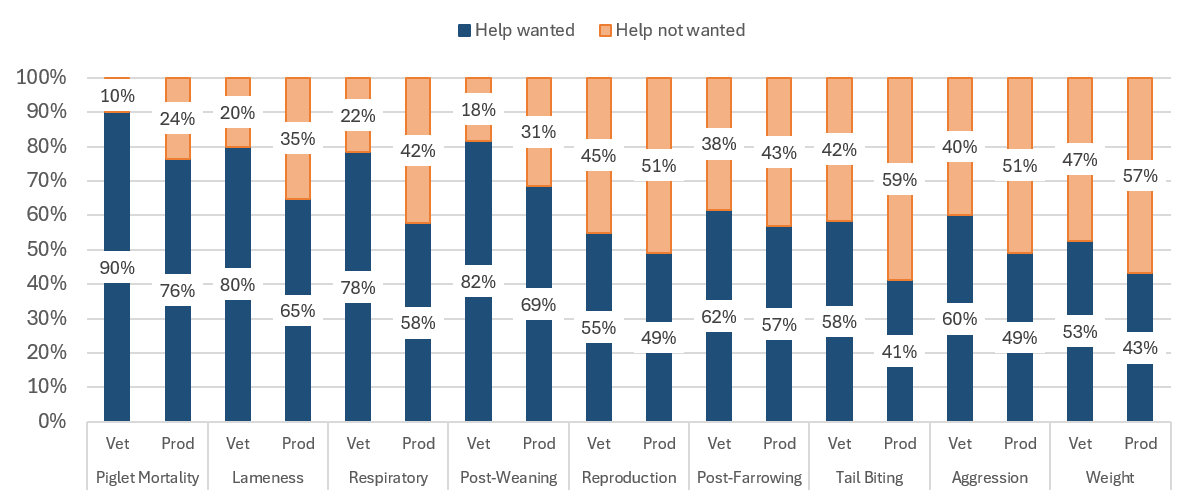
Veterinarians think PLF could help in more ways than producers do.
Innovative types of technology that focus on monitoring and managing pigs fall into a category often described as precision livestock farming (PLF). PLF collects real-time data from pigs to provide continuous information that can be used to make decisions or take action. As more PLF products enter the market, how do producers decide what PLF technology they want to bring to their farm? Are they relying on personal experience? The claims from companies creating products? Or are they being guided by trusted advisors?
About two-thirds of the swine producers we surveyed, from a diverse range of farm sizes and locations, have not yet adopted some PLF technology, but about half said they planned to bring PLF to their farms. When producers with PLF say they are willing to get more, this suggests that PLF is doing something valuable. However, for producers without direct experience, other factors must exist at work. Some of these could be internal drivers like confidence in using technology. Still, others could be external influences, like conversations with PLF-owning producers or others in the swine industry, which have some impact on PLF adoption.
The role of the swine veterinarian in PLF adoption on farm
In a separate survey, we asked swine veterinarians about their clients’ use of PLF on their farms to understand what external influences might affect producers’ decisions to adopt PLF. We asked over half of the vets who said swine producers they serve use PLF on their farms and 75% of these vets said they would recommend PLF to their clients. This underscores the significant role of swine veterinarians in the adoption of PLF. Even vets without such experiences recognize PLF’s potential to suggest it to their clients.
Do producers and vets think the same issues can be solved with PLF?
What technology a producer decides to invest in will be driven by what they need on the farm. What are their particular pig management, production or health issues that PLF could help with? These issues refer to any challenges or problems that producers and vets face in managing their swine. If vets advise producers about PLF, do they prioritize the same problems the producers do?
Vets focus their attention solely on their clients’ pigs. At the same time, producers look at the bigger picture across the operation, which includes feed, equipment, people and buildings. So, it wasn’t surprising that vets said more help was wanted from PLF across all issues related to pig health, performance and welfare. On average, vets said their clients would wish for help from PLF to address issues 12% more than producers themselves reported.

Piglet mortality, lameness and post-weaning issues ranked highest by vets and producers
Both producers and vets agreed that PLF is urgently needed to reduce piglet mortality, alleviate sow lameness, and mitigate post-weaning issues. This shared concern not only underscores their alignment of priorities but also their collaborative approach to addressing these critical issues, fostering a sense of unity and cooperation in the audience.
Vets see more need for PLF to help with respiratory and tail-biting issues than producers
The most significant differences between vet and producer perceptions were found among respiratory issues and tail-biting, with veterinarians 20% to 18% more likely than producers to say help from PLF was wanted on their clients’ farms for these problems. While less than half of producers considered aggression or weight issues problems that they wanted help from PLF to solve, most vets still felt PLF could be used on their clients’ farms to address these issues.
In general, veterinarians tended to see PLF as wanted more by their clients than the producers do themselves. Still, swine producers and vets agreed that PLF was most needed to help with piglet mortality, lameness and issues after weaning.





